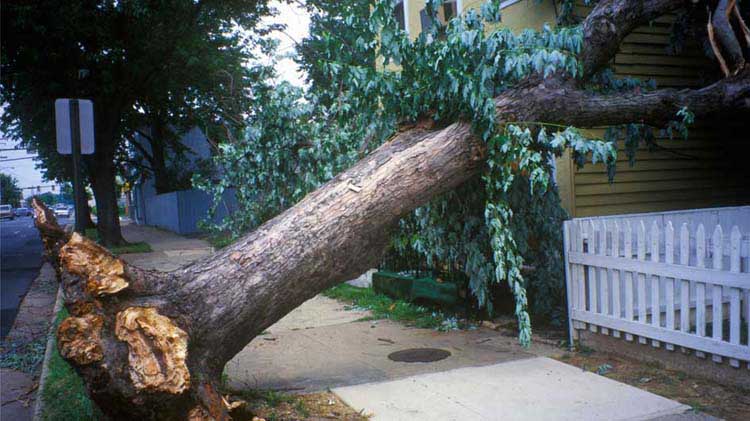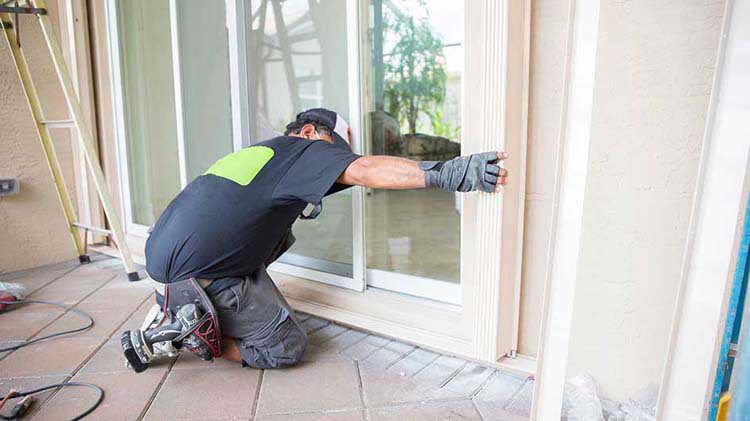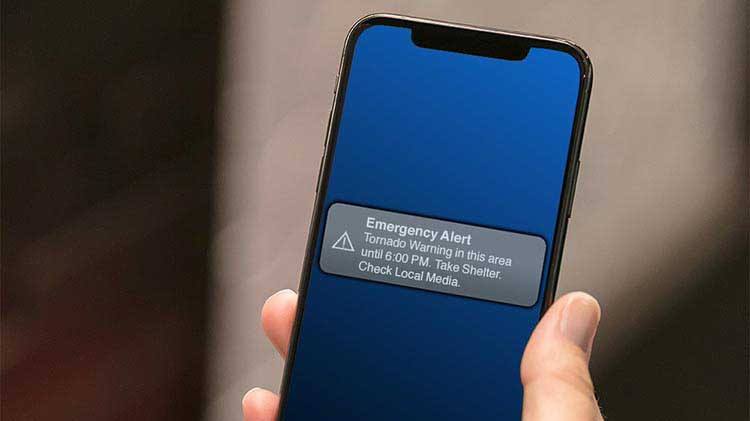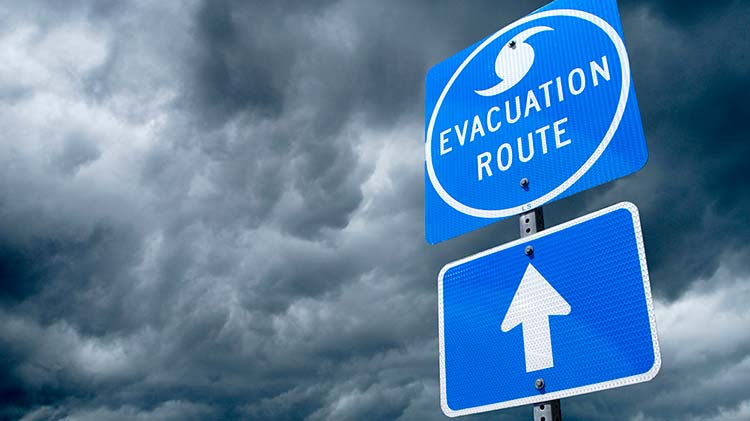Pay attention to straight-line winds
Learn ways to help stay safe from these winds that can harm people and severely damage homes and landscapes.
Thunderstorms can generate powerful straight-line winds capable of uprooting trees, knocking down power lines and damaging roofs and other structural components. Learn more about damaging straight-line winds and how to help stay safe.
What are straight-line winds?
Straight-line winds, also commonly referred to as thunderstorm winds, describe the powerful winds produced by thunderstorms which move in a straight path. These winds are caused by downdrafts, which often occur when a storm produces currents of rain-cooled, dense air. These wind gusts are a common cause of wind damage, capable of causing significant structural issues. Straight-line winds can come in many forms, including:
- Downburst — a strong downward current of air originating from the thunderstorm that descends and spreads outward at the ground. Wind speeds associated with downbursts often exceed 60 mph, and have occasionally been observed to exceed 150 mph.
- Microburst — a small, concentrated downburst that is less than 2.5 miles across and typically lasts a short duration.
- Macroburst — a counterpart to microbursts, a macroburst is a downburst larger than 2.5 miles across.
- Derecho — a particularly-damaging system of merged thunderstorms causing intermittent or continuous wind damage along a swath of at least 400 miles. Derechos create multiple downbursts, and are known to produce windspeeds in excess of 100 mph.
Straight-line winds vs tornadoes: What’s the difference?
Straight-line winds and tornadoes can be mistaken for each other as both can cause significant damage and occur during thunderstorms. Here’s how you can tell the difference:
Straight-line winds
- Refers to any wind gust produced by a thunderstorm that is non-rotating
- More common than tornadoes
- Usually occurs in a downburst and pushes wind out, leaving debris in straight-lines parallel to the wind flow
- Can produce wind speeds that exceed 150 mph
Tornadoes
- Consists of a narrow, violently rotating column of air extending from the base of a thunderstorm to the ground
- Features inward moving and curving air streams, leaving debris patterns that typically converge or curl toward the center of the tornado’s path
- Typically have a short duration, but some tornadoes can last an hour or more
- Can produce wind speeds ranging from 60 mph to more than 300 mph
Straight-line winds can cause the same level of damage as tornadoes, but they lack the atmospheric rotation to form a funnel. The aftermath can help show the difference: If downed trees and other kinds of debris are in parallel rows, that signifies straight-line winds. Tornado damage is generally more sporadic.
How to stay safe from straight-line winds
Straight-line wind safety is similar to tornado safety. When a thunderstorm capable of strong winds approaches, keep these helpful tips in mind:
- Seek a sturdy, interior shelter immediately. If one is not available, crouch down in the lowest spot you can find.
- Stay away from trees and power lines.
- Move to an interior room on the lowest level of your home and stay away from windows.
- Avoid close contact with outlets or electrical equipment as lightning may strike your shelter and cause a hazardous power surge.
- If you're driving, pull over to a safe area with your vehicle pointed in the direction of the wind. And avoid highway overpasses.
How to help prepare your house from straight-line winds
Straight-line winds aren’t usually capable of toppling a building on their own, but objects surrounding a building can become hazards in combination.
- Clear the yard. Loose items can quickly become projectiles. Before a storm hits, bring in or secure items such as lawn furniture, toys and bicycles.
- Trim trees. Trunks and branches that are knocked over may pose threats to the structure of your home. Maintain a shorter, well-kept length so there are fewer opportunities for damage.
- Inspect the roof. Each year, examine your roof and keep an eye out for loose and missing shingles which may require maintenance.
- Keep your emergency kit up to date. If power lines or other utilities are knocked out by straight-line winds, it can be helpful to have emergency supplies on hand such as food, water and medical equipment.
Consider visiting the Simple Insights® severe weather section for more tips on preparing for and recovering from severe weather and our home maintenance section for tips on how to help get your place back in shape.




